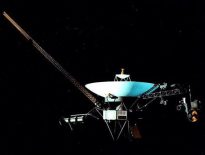(Reuters) – On a small Finnish island and deep in remote rural France, far from the debates and doubts that followed Japan’s Fukushima nuclear disaster, the ground work is underway for a commitment to atomic power for the long term – the very long term.

The problem is disposal of nuclear waste, at present mostly done at surface level. Finland, France and Sweden plan to build the world’s first permanent storage sites hundreds of meters underground.
Finland has already started to build Onkalo, which is designed to take waste over a period of 100 years and then store it for at least 100,000 years, safe from population, fire, flood and other risks. France plans a similar project in Bure in the country’s east.
Several options for dealing with nuclear waste have been studied in the past three decades, including shooting it to the sun, burying in the Arctic and storing it subsea.
“Nuclear waste disposal in geological formations appropriately selected and designed is the least bad concept,” said Arjun Makhijani, a nuclear waste expert and head of the U.S.-based Institute for Energy and Environmental Research.
“Other solutions are so much worse that they have, rightly in my opinion, been ruled out,” he said.
Richard Shaw, a radioactive waste specialist at the British Geological Survey, also said: “Deep geological disposal is the way forward for managing our waste in a safe way.”
But given the long-term horizons involved, geological storage also carries risks that are hard to calculate.
The International Atomic Energy Agency (IAEA) estimated the total amount of discharged spent nuclear fuel to have risen to around 345,000 metric tons (380297 tons) in 2010, up 50 percent from a decade earlier.
“Since radioactive material in storage will remain hazardous for many thousands of years, maintenance — or institutional control — would be required for such periods of time or until permanent disposal is implemented,” the IAEA said in a report.
In the past 1,000 years alone, an institution would have had to survive the fall of the Roman Empire, the Dark Ages, plague, scores of revolutions and dictatorships and two World Wars.
Environmentalists in Finland say it’s unclear how secure Onkalo, in southwest Finland some 230 km from Helsinki, will be centuries from now, with the risks that climate and seismic shifts could allow waste to leak out and contaminate ground water.
Reijo Sundell, president of Posiva which is the company building the site, said the bedrock is so solid it’s likely to move as one piece in any geological shift and the spent nuclear fuel – encased in capsules of copper and cast iron and surrounded by buffers of bentonite clay – would remain intact.
Even in the case of an accident, he said, the impact on people above ground should be minimal.
“We are not saying that no capsules will ever break, but our standpoint is that even if some canisters break, radiation dosages on the ground cannot exceed the international limit of 0.1 millisievert,” he said.
PROGRESS IN FINLAND
Construction workers at Onkalo have nearly finished the 5 km tunnel that will spiral down to a depth of about 400 meters to a network of repositories that will start storing waste from 2020.
Posiva, owned by Finnish utilities Fortum and Teollisuuden Voima, is due to apply for its final stage of construction this year. Its total costs are estimated at 3.3 billion euros ($4.1 billion).
When Reuters visited in early May, the site had the feel of a mining project. About 20 people working underground mingled with scientists running tests in the midst of noisy construction work.
Onkalo will take waste only from reactors in Finland, which has four and plans to have seven by around 2020 to cut its reliance on energy imports.
Most Finns are either supportive or neutral on nuclear energy. Analysts say pragmatism, a tradition of consensus politics and the Finnish parliament’s decision to outlaw the export and import of nuclear waste have kept the nuclear policy on track.
Onkalo took its lead from a similar project in Sweden, where the schedule has slipped. The Forsmark disposal site there is now due to start storage around 2025.
NUCLEAR FRANCE YET TO START BUILDING
France plans to start storing waste underground from 2025 at Bure, in a remote and picturesque part of eastern France, chosen for its thick layers of argillite rock and low population density.
Construction has not yet begun on the storage facility, and the French project is still subject to public debate. Work on the industrial site is due to start in 2017.
Newly elected President Francois Hollande has committed to reducing the country’s heavy reliance on nuclear power by 2025.
But its 19 atomic plants generate 75 percent of total electricity needs, and few analysts believe that will change much by the end of his five-year mandate, while its underground burial project is going ahead.
“Nuclear waste exists, and no matter what, it has to be managed,” Gerald Ouzounian, international head of France’s nuclear waste management agency (Andra) said.
Among local residents, opposition is greater in France than in Finland but has waned.
Corinne Francois, 52, who works as a designer in Bar-Le-Duc, 40 km north of Bure, opposed the project from the outset in the early 1990s. She is an active member of a local group called Burestop 55.
“Our members have halved to around 400 in the past 20 years,” she said.
While part of the disaffection is down to fatigue, it is also because the government has been heavily subsidizing the region, where industry has mostly died, and because Andra has bought some 1,000 hectares of land around the site.
“Bure will be crossed off the map when they will have finished with their rubbish,” said a local farmer, who asked not to be named. He sold his farm to Andra for 1.8 million euros and was offered another twice as big in exchange.
Bure, about three hours drive from Paris, is currently home to an underground laboratory, a precursor to the waste site.
The above-ground buildings are flashy and modern, a stark contrast to the surrounding villages. An exhibition room displaying the storage technology is aimed at convincing the public the site will be safe.
The trip to the lab 500 meters below takes seven minutes in France’s longest elevator.
Officials at Andra hope the 35 billion euro plan, if successful, will become a model for other countries and provide a business opportunity.
“The French model is a real reference in the world, whether in large countries like the U.S., China and even Russia or in smaller countries,” said Gerald Ouzounian, head of Andra’s international division.
“We sell our know-how in different countries,” he added, citing contracts with Lithuania, Slovenia and Ukraine.
YUCCA MOUNTAIN TROUBLE
In the United States, by contrast, policymakers have been disagreeing for years over where to store nuclear waste.
The U.S. government spent almost $15 billion since 1983 assessing Nevada’s Yucca Mountain as an underground storage site, but President Barack Obama shelved that plan in 2010 and appointed a commission to look at the issue again.
In January the commission concluded there was no alternative to burying the waste underground, recommended the government find a new site and cited Finland as a model.
While Republicans want to revive the plan, Allison Macfarlane, who is tapped to become the new nuclear safety regulator, is skeptical.
Decisions on permanent waste disposal have also stalled in Germany, where plans to turn an intermediate storage site in Gorleben into a final repository have met stiff resistance from environmentalists.
Japan is considered too earthquake-prone and densely populated to try underground disposal, and a loss of public trust over nuclear safety following the Fukushima accident has made it even more difficult than before to find a host site.
But last year’s earthquake and tsunami also raised awareness of the dangers of storing spent nuclear fuel in pools at reactor sites, currently common practice with many nuclear operators. ($1 = 0.8028 euros)
(Additional reporting by Chris Wickham in London, Risa Maeda in Tokyo, Roberta Rampton in Washington and Marion Douet in Paris; Writing by Chris Wickham, editing by Jane Baird)





